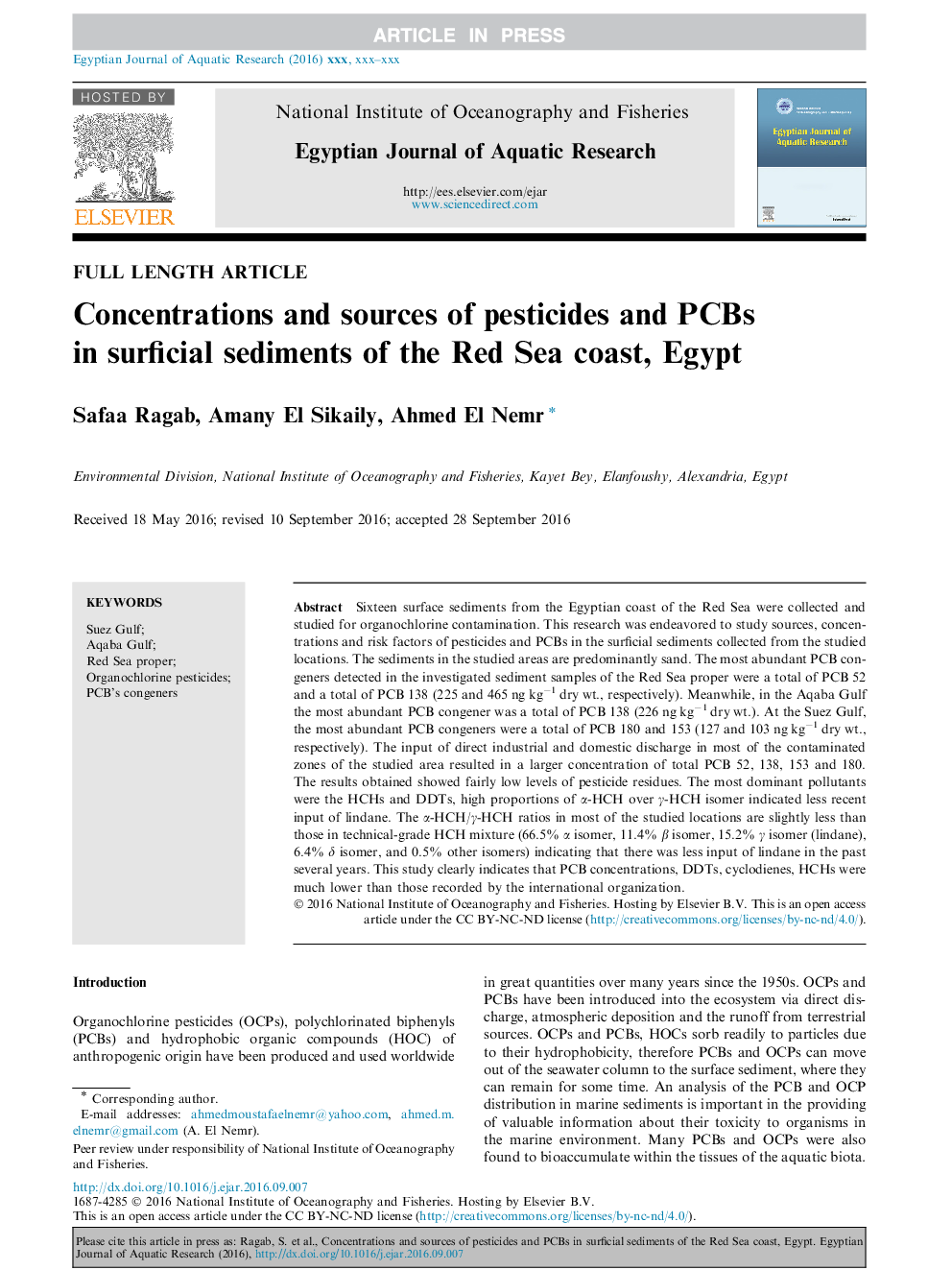| Article ID | Journal | Published Year | Pages | File Type |
|---|---|---|---|---|
| 8875265 | The Egyptian Journal of Aquatic Research | 2016 | 10 Pages |
Abstract
Sixteen surface sediments from the Egyptian coast of the Red Sea were collected and studied for organochlorine contamination. This research was endeavored to study sources, concentrations and risk factors of pesticides and PCBs in the surficial sediments collected from the studied locations. The sediments in the studied areas are predominantly sand. The most abundant PCB congeners detected in the investigated sediment samples of the Red Sea proper were a total of PCB 52 and a total of PCB 138 (225 and 465 ng kgâ1 dry wt., respectively). Meanwhile, in the Aqaba Gulf the most abundant PCB congener was a total of PCB 138 (226 ng kgâ1 dry wt.). At the Suez Gulf, the most abundant PCB congeners were a total of PCB 180 and 153 (127 and 103 ng kgâ1 dry wt., respectively). The input of direct industrial and domestic discharge in most of the contaminated zones of the studied area resulted in a larger concentration of total PCB 52, 138, 153 and 180. The results obtained showed fairly low levels of pesticide residues. The most dominant pollutants were the HCHs and DDTs, high proportions of α-HCH over γ-HCH isomer indicated less recent input of lindane. The α-HCH/γ-HCH ratios in most of the studied locations are slightly less than those in technical-grade HCH mixture (66.5% α isomer, 11.4% β isomer, 15.2% γ isomer (lindane), 6.4% δ isomer, and 0.5% other isomers) indicating that there was less input of lindane in the past several years. This study clearly indicates that PCB concentrations, DDTs, cyclodienes, HCHs were much lower than those recorded by the international organization.
Related Topics
Life Sciences
Agricultural and Biological Sciences
Agricultural and Biological Sciences (General)
Authors
Safaa Ragab, Amany El Sikaily, Ahmed El Nemr,
